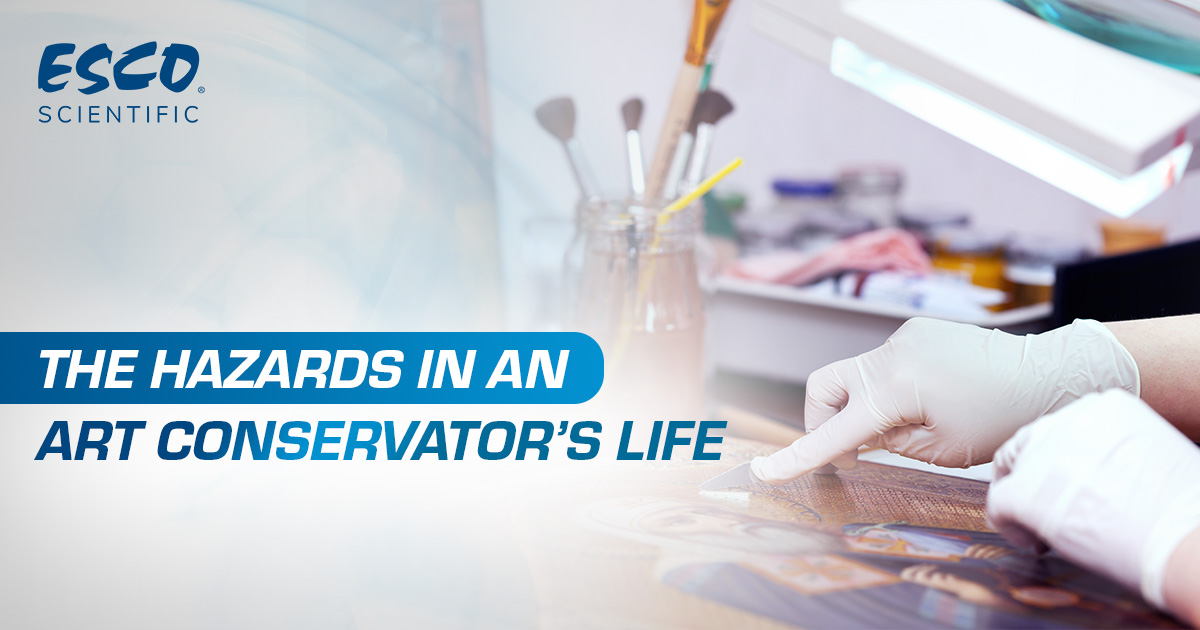The Hazards in an Art Conservator’s Life

“Art is too important not to share.” -Romero Britto
Art conservation enables generations to witness and relish an artist’s lifework. The advent of scientific breakthroughs has enabled the application of principles and practices of technical examination, documentation, and treatment for objects of material culture. Art conservation intends to improve an artifact’s condition by stabilizing its physical condition and dealing with deterioration and/or damage.
The intricate work of art conservation is carried out by art conservators. They carefully study every piece to determine its chemical and physical characteristics and subsequently decide on which methods and materials they would use. Conservators intend to keep each piece to its original form.
Chemistry and Hazards in Art Conservation
Chemistry is a key player in bringing life back to an aged painting. Due to chemical reactions, the colors fade, and the pieces deteriorate making it dull and shy away from the original look. Chemistry comes in the picture when art conservators use various substances along with other advanced technologies to preserve and conserve artwork. They are at risk of exposure to various strong acids, bases, solvents, heavy metal-containing pigments, pesticides, and fungicides. Despite the risk, these professionals are left with limited choice as the hazards cannot be eliminated and substituted.
Employment of Engineering Control
Since hazard substitution and elimination are out of the options, this leaves the conservators with engineering control as the most effective way to protect themselves from occupational hazards. The use of filter-based fume extractors is recommended to effectively reduce the accumulation of vapors. Esco Scientific offers Ascent™ Max - E Series Ductless Fume Hood—a green solution to modern chemistry. It protects users from toxic chemicals, fumes, odors, and particles by means of a directional airflow (away from the user) passing through carbon and/or HEPA filter/s.

While conservators work to preserve and conserve irreplaceable pieces of history, Esco Scientific works to preserve and conserve the health of these professionals. And it doesn’t stop there, we will continue to innovate solutions and achieve a safe working environment for everyone. We call it—the art of safety.
References:
[1] Barbara, S. (2019, July 25). Top 3 Differences Between Art Conservation and Art Restoration. Stella Art Conservation. https://stellaartconservation.com/differences-art-conservation-restoration/
[2] Bradley, K. (n.d.). The Chemistry of Art Preservation. www.ChemistryIsLife.com. https://www.chemistryislife.com/the-chemistry-of-art-preservation
[3] Makos, K. A., & Skimina, M. (n.d.). Health and Safety in Museums and Art Galleries. The Synergist. https://synergist.aiha.org/201605-health-and-safety-in-museums
[4] Materials Information and Technical Resource for Artists. (n.d.). Art Conservation. https://www.artcons.udel.edu/mitra/Documents/MITRA_Health_and_Safety.pdf
[5] What is art conservation? (n.d.). Art Conservators Alliance. https://www.artconservatorsalliance.com/what_is.html